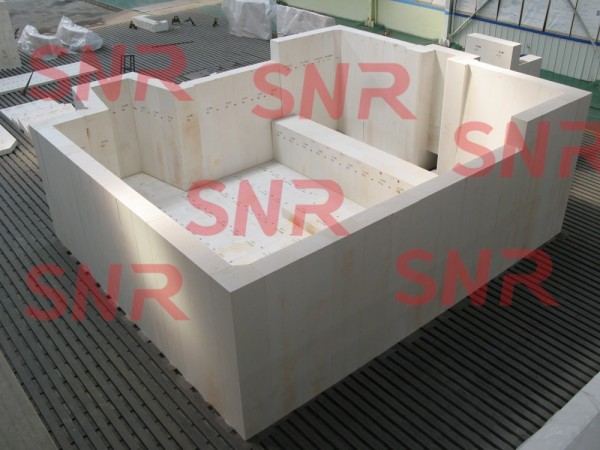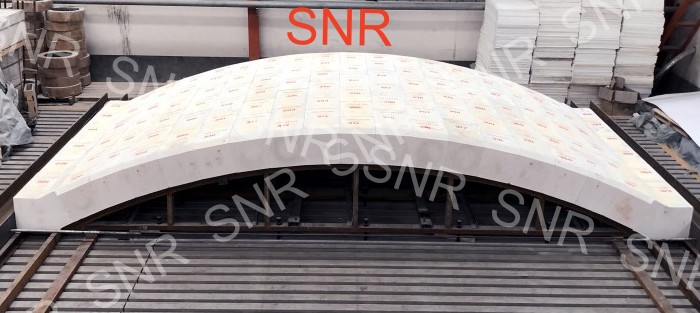
Introduction:
Fused cast AZS (Alumina-Zirconia-Silica) refractory blocks play a crucial role in the construction of glass furnaces. To ensure the reliability and longevity of the furnace, it is essential to conduct thorough inspections of the individual AZS blocks as well as the assembled furnace. This article will provide a detailed overview of the inspection process for fused cast AZS blocks, highlighting key inspection points and essential considerations.


Initial Inspection of Individual AZS Blocks:
Before assembly, each individual AZS block should undergo a meticulous inspection to assess its quality and suitability for use. The following inspection details and points should be considered:
a. Visual Inspection:
Check for any visible cracks, chips, or other surface defects.
Examine the block's overall appearance for signs of uneven texture or discoloration.
Peope can use a bright flashlight to assist for visual inspection, since some long but tiny cracks cannot be found without strong light.
b. Dimensional Inspection:
Measure and compare the block's dimensions with the specified requirements.
Ensure the block's length, width, height, and thickness align with the desired specifications.
Verify the block's weight to ensure it meets the desired standards.

Perform a density test to ensure the block meets the required density range.
It's not necessary to conduct a cold crushing strength (CCS) test on AZS refractory block.
If the manufactuer has the test equipment for anti-corrossion and glass phase exudation, please ask the manufactuer to do the test.
d. Chemical Analysis:
Perform a chemical analysis to verify the composition of the AZS block.
Confirm the desired levels of alumina (Al₂O₃), zirconia (ZrO₂), and silica (SiO₂) are present within the specified ranges.
Assembly Inspection:
Once the individual AZS blocks have passed the initial inspection, they are assembled to form the glass furnace structure. The inspection process at this stage should focus on the following aspects:

a. Alignment and Fit:
Ensure proper alignment and fit of the blocks during assembly.
Check for any gaps, misalignments, or unevenness between adjacent blocks.
Verify that the joints between the blocks are tightly sealed to prevent gas or liquid leakage.
b. Joint Inspection:
Examine the joints between the blocks for any cracks, gaps, or signs of degradation.
Pay close attention to the integrity of the joints, as they are critical for maintaining the furnace's structural integrity and preventing heat loss.
c. Surface Inspection:
Inspect the overall surface of the assembled furnace for any visual defects, such as cracks, spalling, or erosion.
Check for uniformity in color, texture, and smoothness across the furnace surface.
d.Compare the assembled furnace dimensions with the specified requirements.
Confirm that the furnace dimensions align with the design plans and customer expectations.
e.Review all relevant documentation, including inspection reports, test certificates, and quality assurance records.
Ensure that all necessary documentation is provided and meets the required standards.
Conclusion:
Thorough inspections of fused cast AZS blocks for glass furnaces are crucial to guarantee the performance and longevity of the furnace. By carefully examining individual blocks, conducting meticulous assembly inspections, and performing comprehensive final inspections, manufacturers and customers can identify any defects, deviations, or discrepancies,
As a professinal manufacturer of fused cast AZS refractory block, we will provide you all necessary information.If any question about AZS refractory block inspection, please feel free to contact us:
Rick@snrefractory.com whatsapp/Wechat/telegram:+86-13673671009